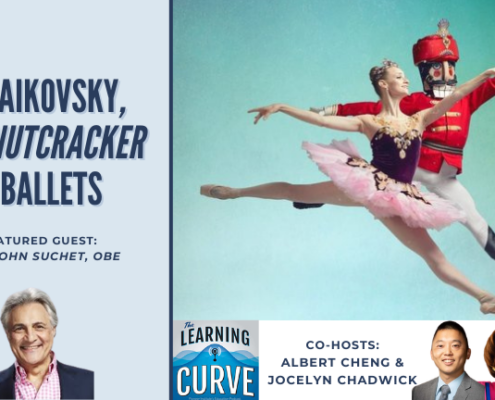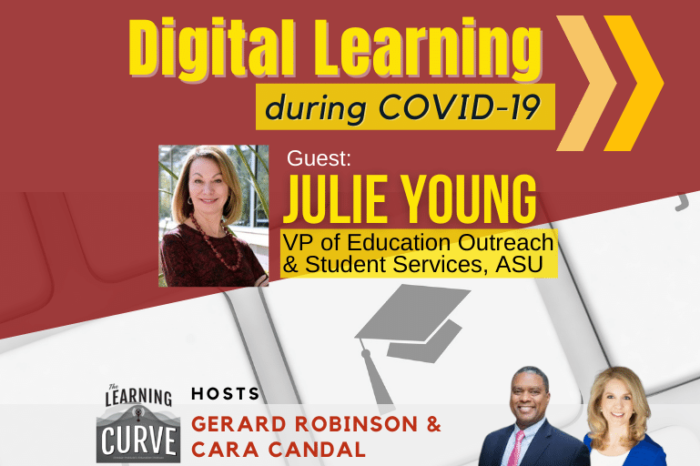ASU’s Julie Young, Virtual Schooling Pioneer, on Digital Learning during COVID-19
/in Blog: Virtual Schools, COVID Education, COVID Podcasts, Featured, News, Podcast, Related Education Blogs, School Choice, Virtual Schools /by Editorial StaffThis week on “The Learning Curve,” co-host Cara Candal talks with Julie Young, ASU Vice President of Education Outreach and Student Services, and Managing Director of ASU Prep Academy and ASU Prep Digital. They discuss the implications of COVID-19’s disruption of American K-12 education and the future of digital learning. Julie describes the enrollment growth her organization has seen as a result of parent demand for alternatives to public offerings, which comes on top of the growth in online schooling that pre-dated the pandemic (an 80 percent increase in enrollment during the last decade). Julie answers critics who claim digital schooling can’t work for early childhood, urban, or special needs students. She shares insights on quality digital education curriculum materials and approaches to subject areas that some assume are not well suited for digital learning.
Stories of the Week: Co-hosts Cara Candal and Gerard Robinson discuss a Wall Street Journal investigation into Facebook, showing that the company is aware of mental health issues especially among teen girls, connected to Instagram. In Afghanistan, the Taliban has ordered school classes to resume in grades seven to 12 – but only for boys.
Guest:
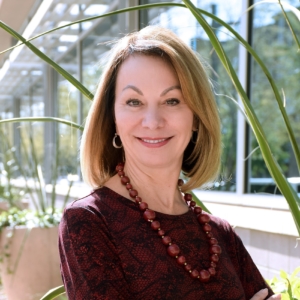 Julie Young is ASU Vice President of Education Outreach and Student Services and Managing Director of ASU Prep Academy and ASU Prep Digital. She is a visionary CEO, educator, and entrepreneur passionate about leveraging technology and building innovative school models that put students at the center of every decision. Under Julie’s leadership over the last four years, ASU Preparatory Academy has grown exponentially in both enrollment and global impact, currently serving more than 7,500 full-time K–12 students and over 400,000 student enrollments in school partnerships around the U.S. This unique program offers students an accelerated path toward college admission and careers of the future with the chance to earn concurrent high school and university credit, shortening time and cost to degree. Julie was the founding President and CEO of Florida Virtual School (FLVS ®), the world’s first virtual statewide school district that began as a small grant initiative and grew to become the largest public K-12 program in the U.S., serving more than 2 million students in 50 states and 68 countries.
Julie Young is ASU Vice President of Education Outreach and Student Services and Managing Director of ASU Prep Academy and ASU Prep Digital. She is a visionary CEO, educator, and entrepreneur passionate about leveraging technology and building innovative school models that put students at the center of every decision. Under Julie’s leadership over the last four years, ASU Preparatory Academy has grown exponentially in both enrollment and global impact, currently serving more than 7,500 full-time K–12 students and over 400,000 student enrollments in school partnerships around the U.S. This unique program offers students an accelerated path toward college admission and careers of the future with the chance to earn concurrent high school and university credit, shortening time and cost to degree. Julie was the founding President and CEO of Florida Virtual School (FLVS ®), the world’s first virtual statewide school district that began as a small grant initiative and grew to become the largest public K-12 program in the U.S., serving more than 2 million students in 50 states and 68 countries.
The next episode will air on Wednesday, September 29th with guest, Mike Goldstein, the founder of the MATCH Charter School and MATCH Teacher Residency in Boston.
Tweets of the Week:
Happy Constitution Day to the chad history teachers with the US Constitution hanging in their classroom.
— Chalkboard News (@ChalkboardNews) September 17, 2021
A recent @CRPE_UW analysis of 100 large and urban school districts, including the 30 biggest in the country, found that only 10% required vaccinations for school staff and just 18% required testing. (via @USNewsEducation) https://t.co/MiF4EEmu9W
— Center on Reinventing Public Education (@CRPE_edu) September 17, 2021
News Links:
WSJ: Facebook Knows Instagram Is Toxic for Teen Girls, Company Documents Show
Taliban ban girls from secondary education in Afghanistan
Get new episodes of The Learning Curve in your inbox!
Read a Transcript of This Episode:
Please excuse typos.
Gerard Robinson:
Hello listeners. This is Gerard Robinson from beautiful Charlottesville, Virginia. Welcome to another session of the learning curve, where we talk about very interesting topics with very interesting people. And I am glad that Karen decided to come back from her very long month long vacation and join me for another session. Welcome back.
Cara Candal:
Was it a month?
Gerard Robinson:
I don’t know. It felt like a month, like
Cara Candal:
A month. You missed me so much.
Gerard Robinson:
Exactly. I had to do a solo. Then I had to do a team, which was all right.
Cara Candal:
We’ve been all over the place, man. We’ve been all over the place, but our band
Gerard Robinson:
Back together,
Cara Candal:
It is great to have the band back together. And it’s like, I got to tell you, at least for today, like the weather here in Boston is amazing. We’re coming into that time of year. Gerard. I’m one of those people that really likes winter and I can feel it sweaters out and pick apples and things like that. So it’s good. It’s new school year loving it.
Gerard Robinson:
And it’s cloudy here today. The weather’s cooling down. The trees are slowly but surely beginning to change colors. And it’s something that I even noticed when I moved to the east coast because in LA for the most part, we had two seasons spring and summer. But when I moved to the east coast, actually enjoyed seeing the change in foliage over time. So it’s all good here. The girls are in school. Of course we’re watching the numbers on our end. And some of our friends schools have gone back to virtual, some have gone hybrid. So
Cara Candal:
Keep rolling in the new reality. Right? Well, we’ve got a great guest today to talk us through some of these issues. So that’s exciting.
Gerard Robinson:
Yeah. And she was ahead of the new reality when she was talking about the importance of virtual education decades ago.
Cara Candal:
Yeah, absolutely. So far ahead, I’m very excited to speak with Julie Young. So it’s going to be a good one.
Gerard Robinson:
Speaking of a new reality, and this is a sad reality, but the one that we saw coming my story of the week is from Emma Graham Harrison, who is in Kabul. She writes for the Guardian and it’s from September 17th. And the title is Taliban banned girls from secondary education in Afghanistan. And with the takeover of that country, by the Taliban, many of us, of course, are not shocked that this would lead to things as usual when they were in power a long time ago. So the Taliban education ministry said that boys in grades seven through 12 could resume school as well as their male teachers. But they said nothing about the female teachers and about the women. And according to Emma, this from the Taliban makes Afghanistan the only country on earth to bar half of its population from getting a secondary education. And so it even goes a step further because the former ministry of women’s affairs, which existed not too long ago now have been changed to get this the newly reestablished ministry for the prevention of vice and promotion of virtue.
Gerard Robinson:
And so things are going, let’s just say not in a good direction for the girls and women under the Taliban. And according to Kate Clark, who the co-director of the Afghanistan analysis network, who worked in Afghanistan at the time, she said that education and literacy are so strongly valued in Islam that the Taliban could not ban girls schools on Islamic grounds. So they’ve always said they would be open to it when security improve. Well, it never did. They never opened schools for girls. If someone who has friends who are Muslims, who are Muslim educators, who are Muslim faith, but not in education, but who chairs education. It is surely a tenant of the Islamic tradition and the people that at least I know practice it, but that’s part one, let’s put that into context internationally. So according to data from the world bank, and they’re taking this from a UNESCO studying, and UNESCO is an acronym for United nations, educational scientific and cultural organization.
Gerard Robinson:
They estimate that around the world, 132 million girls out of school, that’s 34.3 million who are not in primary school, 30 million not in lower secondary school and 67.4 million, not an upper secondary school. And so while Afghanistan through its edict may be the only country to bar half its population. We still have countries without an edict who still have girls out of school. And what are some of the reasons that girls are denied access? Some of the things have here in the United States, number one is poverty. That’s a given number two is violence. Whether it’s physical or sexual third is child marriage. Something that actually exists in the United States, not on the same scale that we’ll see in other countries, but according to a 2017 report also noted by the world bank more than 41,000 girls under the age of 18, married every day. Number four, lack of schools, adequate infrastructure and unsafe environment.
Gerard Robinson:
Fifth is limitations in teacher training and learning materials, their behalf for schools. And in fact, when they do it often reinforces gender biases. So you and I have had this conversation with some of our former guests. One of them is Ayaan Hirsi Ali – she was international bestseller and author of a couple of books. We had her on our February 24th, 2021 show. So listeners go and take a listen to what she had to say, but I want to end as we think about what this means for Afghanistan, but this is really a pure question about gender literacy for women and what it means for culture and what it means for society. So on August 14th, 1776, Abigail Adams wrote a letter to her husband, John Adams. And since the pioneer Institute is the sponsor of this, we know of course you being in Boston, how important John Adams is to your state, listen to what she said, 1776.
Gerard Robinson:
If we mean to have heroes, statesmen, and philosophers, we should have learned women. The world perhaps would laugh at me and accused me of vanity. But you know, I have a mind to enlarged and liberal to disregard the sentiment if much depends as it allows on the early education of youth and the first principles, which must be instilled to take the deepest root, great benefit must arrive from literary accomplishments of women. And so, as we, as Americans are involved in conversations and develop it in other nations, let’s keep that in mind. But let’s also not forget about the girls, not only in Afghanistan, but in Alabama, in Arizona, Alaska and other places in cities with an a where girls are being left behind.
Cara Candal:
Yeah. I mean, wow. Like so many of us, whether you are a woman, whether you are a parent of girls, right? My stomach is just doing, flip-flops listening to you talk about this. And it has, it’s, it’s hard. There’s so many things for one stomach to do flip flops about in the news lately. And this is just, this is heart-wrenching to end though with a quote from Abigail Adams. And to think that, you know, there was a time in this country where women had to assert their right to an education. It was certainly not then seen as a right. And she was of course, a woman with more access than almost anybody. Right. But I have to imagine Gerard that it’s amazing to me that I think just maybe last show or two shows ago, we were talking about how women have, in fact, in so many ways in this country in particular and yes, to your point, many still don’t have access, but in so many ways have surpassed men in college going rates and college success, college graduation, and all of these things.
Cara Candal:
And we were lamenting, oh, maybe it’s time to start thinking about boys again. So the disconnect here is profound. And then I think about the words of Abigail Adams, who you might not have. She was advocating for women to have formal access to education, but certainly of that time, if you were a wealthy person, you know, she just wasn’t supposed to put her education to use, right. It wasn’t that wasn’t taught to read, et cetera, with the Taliban is trying to do to women is fundamentally different. I don’t know enough about the topic to say that I think something will happen, but here’s my hope. My hope is that the past 20 years, as imperfect as they were in horrible as they were for so many people, American Afghany allies across the world allowed some percentage, some number of women of Afghan women to have access like they had never had before to education.
Cara Candal:
And therefore the tool that they have in their toolbox now of literacy and numeracy, and being able to have access to higher education in many cases has at the very least formed a whole new class, a whole new group of female led and men too. Right? But I’m thinking of advocates of people who will no longer stand for this. Now, many of them of course have fled that country and will work on the periphery. Some have not, and some will work inside, but this is also something that politics of the war aside and what has been happening not only in the last 20 years, but particularly in the last few weeks, this is a global issue. And I think to the point that you’re making the light being shown in Afghanistan, which is just a really is one of the most egregious examples that we have, but the whole world, the whole, the international community needs to be incensed about this.
Cara Candal:
And this is obviously we didn’t succeed in fixing this issue by waging war. So it’s a different kind of word that needs to be waged right now. And this is just, I hope we continue to talk about it. And thank you for bringing up our prior guests. Ayaan Hirsi Ali, right? Because she spoke about this very issue. She spoke about the fact that what she had escaped is not the reality for so, so many women across the globe. So Gerard, my story of the week is it’s also just horribly depressing. But it’s another elk because it also about women. So maybe this is, we can seem this, like the girl show or something, but as much access as most American girls and women have in comparison to so many women around the world. There’s also a lot of insidious stuff going on right here at home in Gerard.
Cara Candal:
I don’t know if you’ve been following this wall street journal series on Facebook, but it is pretty amazing. It is quite compelling. And the story that I want to bring to our attention today now, Gerard, you are a father to what? Three girls. Yes. Okay. So I’m sure these are issues that you think about, and I’m sure that as a father of young children of a certain age, it’s really difficult to limit kids access to social media. Would you agree with that? Absolutely. It’s really difficult, right? This is something my kids are not quite old enough to have, for example, cell phones in their hands or I-phones in their hands. We’re trying really hard, but it’s an uphill battle, right? So Facebook, this series on Facebook and in the wall street journal, their most recent issue on what Facebook has known for years about Instagram and its effects very specifically on young women.
Cara Candal:
It is just astounding and it hearkens back to a wonderful book called the coddling of the American mind that I highly recommend to our listeners. If you haven’t read it. And that’s from a group of professors who had done their own research on the rise in for example, depression and even suicide among young people with the corresponds to the rise of the like button on apps like Facebook and Instagram. But this wall street journal series really digs in to what Facebook knows and has known about the correlation between Instagram use and its effect on young women in particular. And it is just absolutely astounding. So I want to, I want to share a quote with you. This is exactly from the article for the past three years, Facebook has been conducting studies into how its photo sharing app affects its millions of young users. Repeatedly.
Cara Candal:
The company’s researchers found that Instagram is harmful for a sizeable percentage of them. Most notably teenage girls quote, we make body image issues worse for one in three teen girls said one slide from 2019 summarizing research about teens girls who experienced the issues, quote, teens, blame Instagram for increases in the rate of anxiety and depression set another side. And this reaction was unprompted and consistent across all groups, among teens who reported suicidal thoughts, 13% of British users, and 6% of American users trace the desire to kill themselves to Instagram. One presentation showed. So this is research Facebook’s own research that they have known about yet. What this article goes on to explain is that Facebook’s public presence and their public comments on what they know about the effects of social media on young users. Don’t jive with that at all. And in Gerard, if you’ve been, it was more in the news a couple months ago, but Facebook is now saying that they’re going to come out for a, an Instagram version for younger kids for kids under the age of 13, because you know, you’re not supposed to be able to use it if you’re a certain age, although we know so many children, are I just as a human and a woman and a mother find this to be just absolutely I’m incensed about a journey yet.
Cara Candal:
I also feel a little bit powerless. I don’t know what to do in the sense that these things are here to stay. And I think sometimes I think, okay, well as parents, what we need to do is educate our children and watch what they do online and really build that self-esteem so that they don’t feel that they have to go down the Instagram rabbit hole and have that experience yet. I also know as somebody who uses these apps very occasionally that right, I don’t go down the teen girl rabbit hole anymore, but I go down the shopping rabbit hole or something else. And the effects of these apps on the brain. I think the reflective adult can actually notice it or at least reflect upon it after it has happened to you. I think that this is something increasingly to Gerard, that it has such links to education.
Cara Candal:
I often wonder about, you know, one of the reasons I value my go school. One of the many reasons I value my kids’ school is because we have a community of parents who have really come in hard and tight about saying, we don’t want our kids to have phones in school. We don’t want our in, in the, if you’re not having phones in school, if you don’t see your peers with them, the kids are a little bit less likely to advocate for it. But these are just, this is a really jarring series. It’s a really jarring article. And I think that this is just the beginning of a, not only a body of research, but a really important conversation, reckoning that this country needs to have, not about how we do a way with this form of social media, because that’s probably not even possible, but about how we navigated, how we help kids navigate it, especially young women and asking ourselves questions about why is it that young women suffer so much more from body image issues and in others on Instagram, which has so much to do with this thinking around, we have come so far since Abigail Adams said that beautiful quote that you just read.
Cara Candal:
We have come so far in so many ways, but we have also just unearthed a whole nother trove of issues that women in this society have to deal with. They have been dealing with for a long time, but in many, many different forms. So I highly recommend to all of our listeners, parent, or not that you read this series and let’s continue a conversation.
Gerard Robinson:
Well, I’m going to at you and read it because I have not followed that series. So this is good to know. I don’t have a Facebook account. My wife has one. That’s just more of a picture sharing. Our girls don’t use Instagram. Well, I guess the middle daughter, but use it. The older daughter of course does partly for work and other reasons, but it says a lot about what we as parents or caregiving adults for those who are not with biological parents, those who may be adopted or in others’ care, this is a, this is really an adult caregiving challenge. We often put the onus on girls of different ages to do these things. That’s part of it, but we also have to role model as adults. What we think is proper. So there’s a lot package that about parenting. We, of course, as a show that talks about parental choice, there’s also an aspect of it called parental responsibility.
Gerard Robinson:
As much as we want to give parents options. We’ve also got to expect them to do some work in this area as well. So I will read more about that. And the fact that Facebook knew this is going to raise some really interesting questions. I know for lawmakers in Washington, but also at the state level. And as I heard you talk more about it, it reminded me of, and that makes a comparison in terms of an apples to apples, but what cigarettes companies were saying, thirties, forties, and fifties, only data to come out and admit X, Y, and Z when you knew it before.
Cara Candal:
Absolutely. And you know, it’s parenting too. And it’s also peer groups. I’ve thought a lot about this. I mean, in, in the cigarette comparison is apt in that way because kids are more likely to smoke. If they have a friend who does or who. Right. And I think that listen, and the how this country fought the battle against cigarettes is probably one of the most successful PR campaigns in history. If you look at rates of smoking, right? So how can we think about this? But I think about this absolutely. To your point as a parent, but also in terms of watching really closely to the kids that my kids hang out with, have easy access to iPhones when they’re really young or, you know, it’s also about being on the same page with the parents in your kids’ peer groups. So just so much to think about and talk about. And and also knowing that we as parents can’t do it all the best of people, you know, with the best of intentions, we often miss what’s going on with our kids, which is sad. And anyway, what a depressing start to this show, Gerard
Gerard Robinson:
Yeah. Well, let me add one more nuance to that part. I like the fact that you remind us about peer influence, but there’s also a dynamic in here called the boys and what they are saying about women, how they describe them, not only in lyrics, but in writing and what they tend to mark it as what they think is beauty versus what beauty may be in a ubiquitous way. So there’s also a boy dynamic and this as well, and they’ve gotta be held accountable.
Cara Candal:
That’s right. What confusing times on so many levels for young people, but we do have a guest today. And I know that you can’t be with us. You have another appointment. So, but our guests we’ve had on the show before we are going to be speaking with Julie Young, who I think is going to give us a little bit of hope about technology rights. So if I’ve just given us a little bit of like a, a dire warning about the perils of some technologies in Julie’s work, it really gives me a lot of hope because this woman has really been just an absolute pioneer in online learning. And boy I think we spoke to her really pre pandemic beginning of pandemic. And a lot has been learned since we spoke with Julie last. So I’m sorry that you can’t stick around for it, but we are going to be looking forward to connecting again soon. And we’ll be back with Julie right after this.
Cara Candal:
We’re really excited to have back with us actually for the second time on this show, because she does such great work. And it’s so relevant to this moment we have with us today, Julie Young, Julie is the vice president of education outreach and student services for Arizona state university and the CEO of ASU digital prep high school. She is the leading voice for revolutionizing K to 12 online education on the global stage as the founding president and CEO of the Florida virtual school, young and her team grew FLVS into a diversified worldwide organization, creatively serving over 2 million students in 50 states. And here’s something I didn’t know, in 68 countries worldwide, Julie graduated with an med from the university of south Florida following her undergraduate work at the university of Kentucky, Julie, welcome back to the learning curve.
Julie Young:
Thank you. It’s my pleasure to be here.
Cara Candal:
We’re happy to have you back. And as we said earlier, Gerard can’t be with us today. So I get you all to myself, which I’m very happy about a little bit of female power here. So I was, as we were talking before before we started recording Julie, can you just, before we dive in to talking about this past couple of years, can you just tell us about your work? What is it that you do right now in your day to day as vice-president for education outreach at Arizona state and what is ASU prep digital high school?
Julie Young:
Certainly I’d love to, it’s been such an adventure in such a journey being part of ASU and as a vice president for education outreach and student services, my priority and major responsibility is being managing director or CEO of ASU preparatory academy and ASU preparatory academy is a network of charter schools that ASU authorized about 11 years ago and has grown into these 11 schools, 10 of which are brick and mortar schools. We call them immersion schools at ASU and then one is our digital school. And our digital school has gone from being a high school in the last year and a half to being a full K through 12 offering a full-time offering. And so it’s my job to manage the network of charter schools. I was recruited to come to ASU five years ago to start the digital high school, as I think you all know.
Julie Young:
And if you know anything about ASU, ASU is just super focused on literally changing the world for students and citizens everywhere and creating pathways into higher education, into learning opportunities, regardless of any student’s background or baggage or previous failings, so to speak. And so ASU prep and ASU prep digital specifically was designed for two reasons. One is to create new education models for success. So we have this really unique opportunity at ASU prep digital to create these models, test them in our 10 brick and mortar schools, and then take them out to the rest of the world. And then secondly, to increase student outcomes for everyone we serve. And we really view the world as our community. So in a nutshell, the last thing I’ll say, in addition to having our full time digital school K-12 school, we actually take those services out throughout the world.
Julie Young:
We’re partnering with schools all over the world to provide digital instruction. If they have a teacher gap or a teacher shortage situation, or they need a teacher mentoring solution, we provide licensing of our content. We are developing next generation digital content. And then we have a massive effort right now in terms of teacher training, really working with leaders and teachers all over the world to teach them how to do what we do well in terms of moving from traditional classroom education to virtual, to online, to hybrid, and then everything in between that certainly COVID has kind of forced us into all the while encouraging and creating an opportunity for students to start college in high school, which is really our niche.
Cara Candal:
That’s really amazing. So you guys were, you had a pretty good handle on this before the pandemic, but as you just indicated, certainly during the pandemic things really heated up. Now I heard rumor, and maybe you can confirm this, that in Arizona, which has a really just, it’s probably the most robust sort of educational marketplace for parents, maybe along with like Florida or right next to, and that when the pandemic happened and kids were forced to go digital that charter schools in particular, just that already had sort of nailed their digital offerings, saw parents either begging to get in or just coming and expanded their offering. So I’d love to hear a little bit about, you know, obviously we could make sweeping statements about the implications of what’s happened in the past year and a half for learning and for education, but can you talk a little bit first about like what it meant for ASU digital prep? And then can you talk more broadly about how you think this moment could push us into digital learning in the now and in the future?
Julie Young:
Yeah. Arizona is a significant leader in choice education. There are many choices. There are many charter schools, certainly in the state of Arizona. And for us specifically, our enrollment in fiscal year 19 for our full-time program was about 800 students. Fast forward to fiscal year 20. That number went to 4,000 or we saw a 700% increase literally overnight. Yeah, it was kind of crazy. So in addition to the work we’re doing around the world, we went from approximately 42,000 enrollments worldwide to close to 350,000 enrollments worldwide. So significant increase in interest. And, you know, with that said important to note with our numbers today for our digital school, we’re somewhere in the neighborhood of about 37, 3800 students. Now that is still growing, but kids are coming in growing like crazy. You’ve got some coming in, some going out. And so it is a really challenging, you know, revolving door, you know, as we think about what this means for the future, additional learning, I think it would be difficult needing foolish to assume that education will just roll back to a pre pandemic status quo.
Julie Young:
Our entire educational system has been stretched beyond its limits and like a stretched out rubber band. It’s not likely to return to its former shape. And quite frankly, I hope it does not return to its former shape. There are so many advantages to this reality when the pandemic forced everyone home, our schools would not have struggled to pivot. If we, as a nation had already built the infrastructure and the support systems, you know, that that allow a more resilient program to continue without a hiccup. This is a huge gap that we’ve obviously identified as a nation. We have this technology and these content solutions much longer than we’ve had the fortitude to remove the obstacles that prevent innovative learning solutions from thriving. So there really was no excuse for what happened in the pandemic initial pandemic year in places where educational and legislative leadership is taking the lead to facilitate innovation.
Julie Young:
We’re seeing a lot more creative options for students rise to the surface. In fact, the digital learning collaborative issued a recent report in 2019 before COVID about the rising practice of e-learning days. E-Learning days in districts across the nation and really around the world. Singapore has been a leader in e-learning days for years. And this is the idea that you build in these e-learning days, which gives districts flexibility to kind of hone what it looks like when there is a crisis and practice. So whether it’s serving homebound students, managing school, closings, due to weather or other circumstances, fires or continuing learning on teacher professional development days we have a way to keep this continuity of learning going. So 12 states have already developed formal state policies and at least four more examples of district level initiatives. So there is some forward movement there, and there’s some creative thinking that we really need to encourage. If we want our students to have lots of open doors to learning when one door closes like we have seen over the last year and a half. Well, so Julie, I to take that
Cara Candal:
Because you say 12 states and we’re seeing movement in some districts, but also in, we’ve been talking in recent weeks on the learning curve with throughout Bradford and others. We have this conversation at least for example, not to call out Massachusetts, but I look at the public schools around me and think to myself, there’s very little evidence that we learned much about how to leverage digital learning to our advantage when we were forced to do it, right, there’s this, I think there’s been this huge moment to get kids back to school, which is great on many levels, but it seems apparent in a lot of places, there’s been a lack of reflection and almost no, almost a refusal to say like, Hey, we’re going to figure out how to get really good at this. Do those digital learning days as you’re talking about that. So that yes, inevitably when there’s a blizzard, when there’s a hurricane, when we’re, let’s hope not right, forced inside again, for whatever reason due to for health reasons, what do you say to those states districts, legislators that, that aren’t showing a willingness to sort of get innovative, get creative? What’s your pitch?
Julie Young:
Yeah, first and foremost, I think it borders on education malpractice to not offer these opportunities to our students in this current crisis. You know, while students learning in online environments has certainly seen an increase in the last year and a half. There has been a very unfortunate backlash, much of it due to frustrated teachers, students and parents who simply were ill prepared to work online or not served appropriately. And, you know, as professionals in the online learning field, the biggest challenge lies in correcting this false and even dangerous assumption that the remote learning that we propped up for the emergency purposes of the pandemic is an accurate example of technology supported learning in general. And so placing learning into an online delivery mechanism like zoom takes classroom-based pedagogy and plops it in a non plops it in online without considering the implications for virtual learning environments and designing high quality learning experiences, neat, any ecosystems.
Julie Young:
And I think for states that have kind of fallen behind or fallen off it, there really is no excuse. Almost every state has a state virtual school or several virtual schools that have been designed to do this work. So when we think about this idea that it’s face to face learning or nothing, which is what we’re experiencing now with several states, I simply think that’s not a choice. I mean, we have already seen so much harm in the form of students being sent home to quarantine while their teachers are literally legally unable to connect with them, even in this emergency situation. And so I say to state, we have an obligation to give students every opportunity to learn. And I always take the approach, try, try again, try another way. And the very idea that we simply are sending students home without options when there are a plethora of options for students, you know, it’s just inexcusable. And so I say to the leadership of those states, let’s step up, use the resources digital learning has been around in K-12 education for 25 years. There are great solutions out there that are resulting in great results for students. And so we need to take advantage of it. We’re sticking our heads in the sand.
Cara Candal:
Yeah. And you can read really great stories, anecdotal evidence out there of parents who experienced high quality, digital learning endemic, and are like, wait a minute. Why happens? It’s all along. I want to ask you though about one of the most common critiques. And I have to say, you know, part of what you just said about what most of us experienced during the pandemic, really wasn’t digital learning as you know it. Right. But we hear from parents of students and teachers and others for kids with special educational needs or even early learning like pre-K students and kindergarten students, I’m a parent to a four year old and, and folks will say, well, it’s absolutely impossible to educate these children online. I’m left a little bit befuddled because I’m always, I can’t believe what my kids can do with the tablet half the time they have it and have figured something out before I’ve even discovered it’s in their hands. So what do you say to these like, well, students with special educational needs, it’s not for them English language learners. It’s not for them, young kids. It’s not for them. How do you answer those critics?
Julie Young:
The first thing that I always do when I hear that is let’s just replace the word, digital learning with classroom learning because what we know from decades and decades of public education is that it’s not for everyone. Classroom learning is not for everyone. It does not work for all of our students. And so with that said, I absolutely believe that there are students who need face to face daily connection. How we get that face-to-face daily connection is different in traditional school settings than the learning support that can also be built into online education opportunities, whether those are through neighborhood micro school or we support helping parents set up and design those programs, a blended learning or a hybrid environment where students are in school, some of the days, not all of the time, certainly are there challenges, of course, can we create solutions for those challenges?
Julie Young:
I think only if we are willing and we really are looking at putting the student at the center of these decisions and that we get serious about personalizing education. We have always argued in favor of providing a ton of options. We always including traditional, face-to-face learning as first and foremost, but there’s value in leveraging technology when and how it’s appropriate to increase learning outcomes. And you know, whether learning at a traditional school or in an online adaptive technology-based program, we can identify exactly where each student is struggling. And then we can offer up content to fill those gaps and support growth. We have the tools to do this now. And I think what parents and naysayers fall back on is we have a tendency in education to always think about one size fits all. This is how we’re trained to teach kids. And we teach them all exactly the same in many of our classrooms. So even if that child is sitting at home, how they learn online can be different. And it’s our job as the educators to figure out what that looks like and, you know, figure out a way to reach, reach that student.
Cara Candal:
Yeah. What you just said really resonates because I think anybody who’s had kids in their life as a parent or otherwise knows that one size never, ever fits all, it’s amazing how different they can be from one another and how differently they learn and want to just a last question here about thinking about our listeners who are parents and our listeners who are teachers, Julie, and it’s been an historic year for opening up opportunities in some ways, right? So we, the number for example of education savings account, Arizona has one in this country, doubled this year. And in one of the things that those accounts do is they provide parents with money to spend, to customize learning for kids and parents in that have those ESAs can, for example, buy digital curriculum, digital experiences, sign up for, you know, and that they can use for homeschooling, or it may be, they would through part-time enrollment or other means attend a school like yours. Can you talk a little bit about the kind of digital education and curriculum materials? Are there certain that certain ones that really stand out to you or certain types of curricula that you would advise parents and teachers to really gravitate towards?
Julie Young:
Yeah. There are so many choices in K-12 curriculum these days. When we first started back in the nineties and the late nineties at FLVS, we didn’t have any choices. And so we were forced to, you know, immediately go into development and create a development shop and create our own K-12 digital learning materials. And it’s a different story today. And in fact, it can be pretty overwhelming to district leaders and to parents in terms of there are so many choices, so much out there and the quality ranges from excellent to terrible. So it can be pretty tough. And so there are some great resources put out like organizations like EdSurge and ISTI, that will guide your purchasing decisions. Certainly ASU prep, digital offers content K through 12. We offer that content toschools, to leaders and to parents specifically. And there are, you know, many other programs, certainly like ours that offer quality materials.
Julie Young:
In addition to ed surgeon, ISTI in terms of guides to purchasing decision, there’s also the digital learning collaborative. And I think you are familiar with the digital learning collaborative came to be in the last few years to somewhat fill the gap that the, or the void that was created when I, Nate ina calls kind of priority shifted to competency based learning. And so they offer excellent research and several guides on how to start and run high quality digital learning programs, which is really more about the planning and program design that precedes the purchasing decisions. You really need to understand, you know, as a parent, what’s your day going to look like, how much time are you going to be able to spend as a parent with your child? Are you the one that’s going to be home, or are you going to have someone else?
Julie Young:
Who’s a learning coach home. And I have seen quality content and just about every subject area. And the thing that comes to mind just as a kind of fun aside was back in the day when we developed PE and everybody was like, this is impossible. And it turned out to be one of the best courses that we had ever offered because it engaged the entire family. And each student had the opportunity to identify, you know, what they wanted to do for their own physical fitness. And so whether they walked, they biked, they swam, they ran, or they played football, or what have you. It was very personal. And so I would encourage parents to kind of think the same way as they think about their own children is what are their parents, what are their children like to do? What are they interested in? And, and we kind of know how our own children like to learn and then seek out some of those materials in that way. And certainly I’m always willing to be a resource to any parent who has a question or needs guidance.
Cara Candal:
Well, you better watch out because might be getting a lot of emails, Julie, thank you so very much, your work is so important and so inspiring, and we just love having you on. So thanks for taking the time.
Julie Young:
Thank you so much for having me. I appreciate it. Bye.
Gerard Robinson:
Well, listen, as you know, we always get to a point where we do a tweet of the week, but I’m going to do two this week. The first one is from Chalkboard reviews, September 17th, happy constitution day. And this is for all the teachers in the United States who teach us about the constitution. We often forget that is constitution day, but they had a tweet about it. And glad to see that the second one is from Robin Lake who’s with the Center on Reinventing Public Education. Also from September 17th and in a recent CRPE analysis of 100 large and urban school districts across the country, including the 30 biggest in our nation. They found that only 10% required vaccinations for school staff and just 18% required testing. And this was via us education news.
Cara Candal:
Wow. Paint me surprised about that last one, but you know what? I bet a lot of those. I bet even if they are not requiring vaccinations, I think teachers tend to have pretty high rates of vaccination, but anyway, really interesting. Thank you for that Gerard. Okay. And next week we are, I’m pretty excited about this guest. Next week, we are going to be speaking with Michael Goldstein. He is the founder and former president of the match. School is a phenomenal charter school started right here in Boston, Massachusetts. And it also he’s the founder of the match teacher residency program, and many have been modeled after it. So looking very forward to that conversation, dear listeners, thanks for spending this time with us and Gerard and I will be back next week.
Recent Episodes
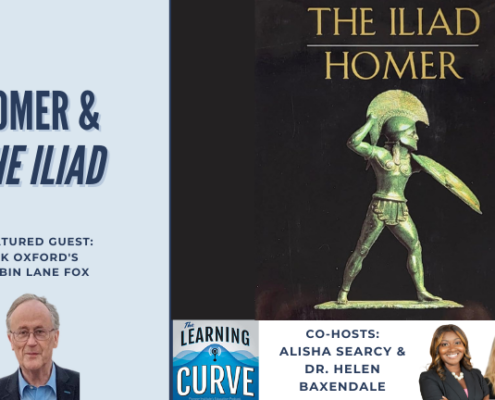
UK Oxford’s Robin Lane Fox on Homer & The Iliad
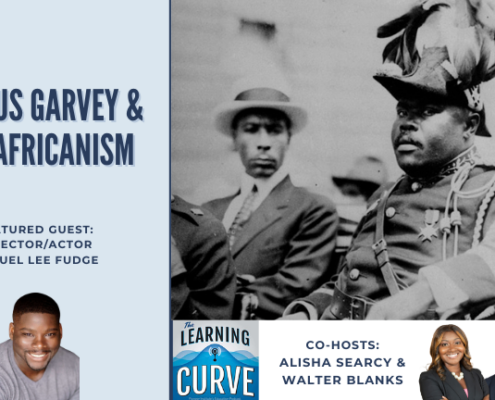
Director/Actor Samuel Lee Fudge on Marcus Garvey & Pan-Africanism
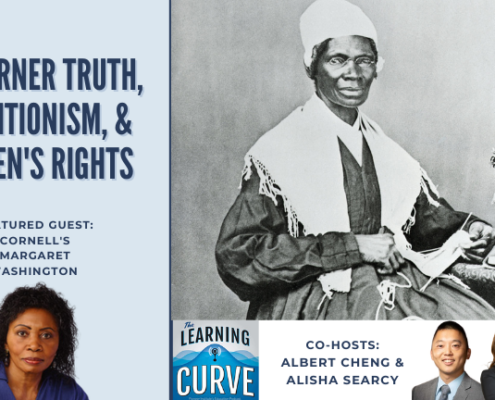
Cornell’s Margaret Washington on Sojourner Truth, Abolitionism, & Women’s Rights
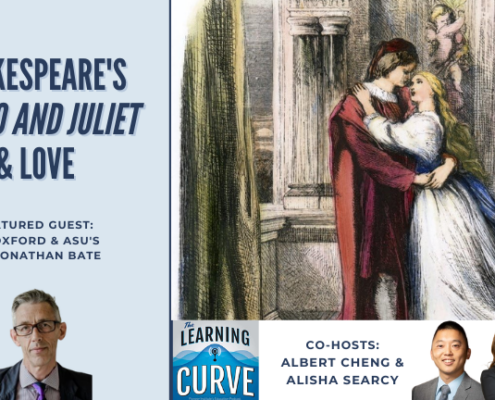
UK Oxford & ASU’s Sir Jonathan Bate on Shakespeare’s Romeo and Juliet & Love
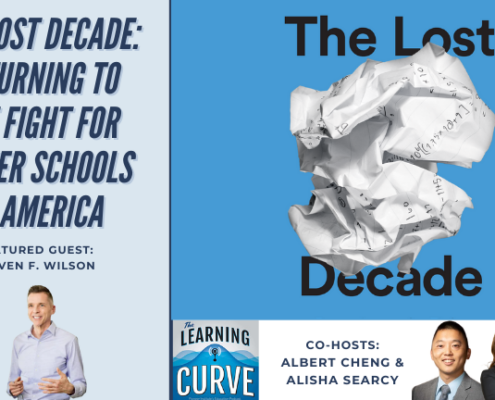
Steven Wilson on The Lost Decade: Returning to the Fight for Better Schools in America
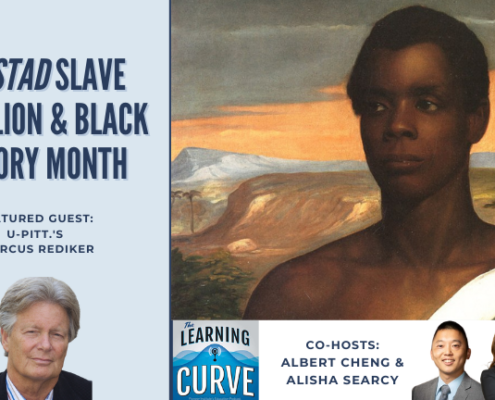
U-Pitt.’s Marcus Rediker on Amistad Slave Rebellion & Black History Month
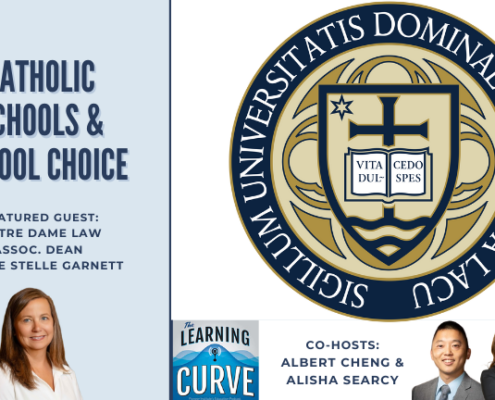
Notre Dame Law Assoc. Dean Nicole Stelle Garnett on Catholic Schools & School Choice

Alexandra Popoff on Vasily Grossman & Holocaust Remembrance
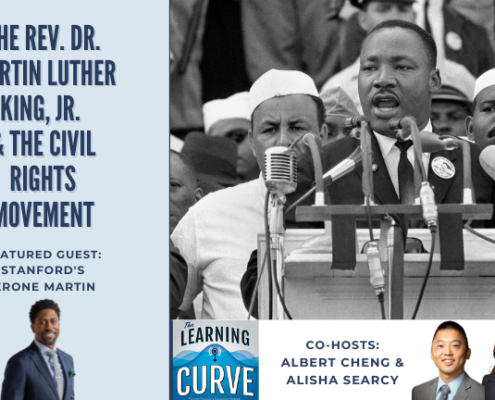
Stanford’s Lerone Martin on the Rev. Dr. Martin Luther King, Jr. & the Civil Rights Movement
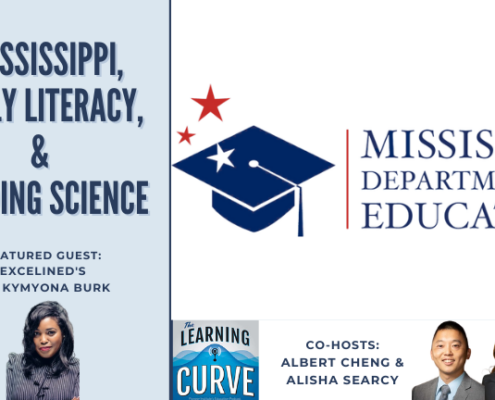
ExcelinEd’s Dr. Kymyona Burk on Mississippi, Early Literacy, & Reading Science
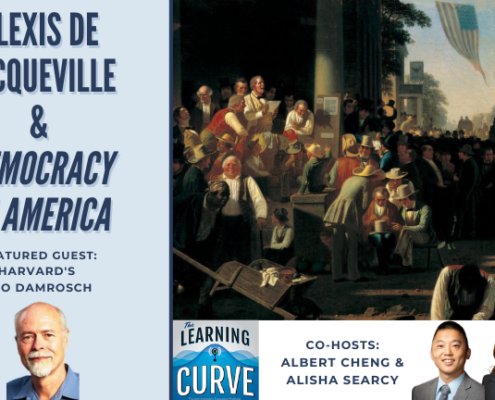
Harvard’s Leo Damrosch on Alexis de Tocqueville & Democracy in America
